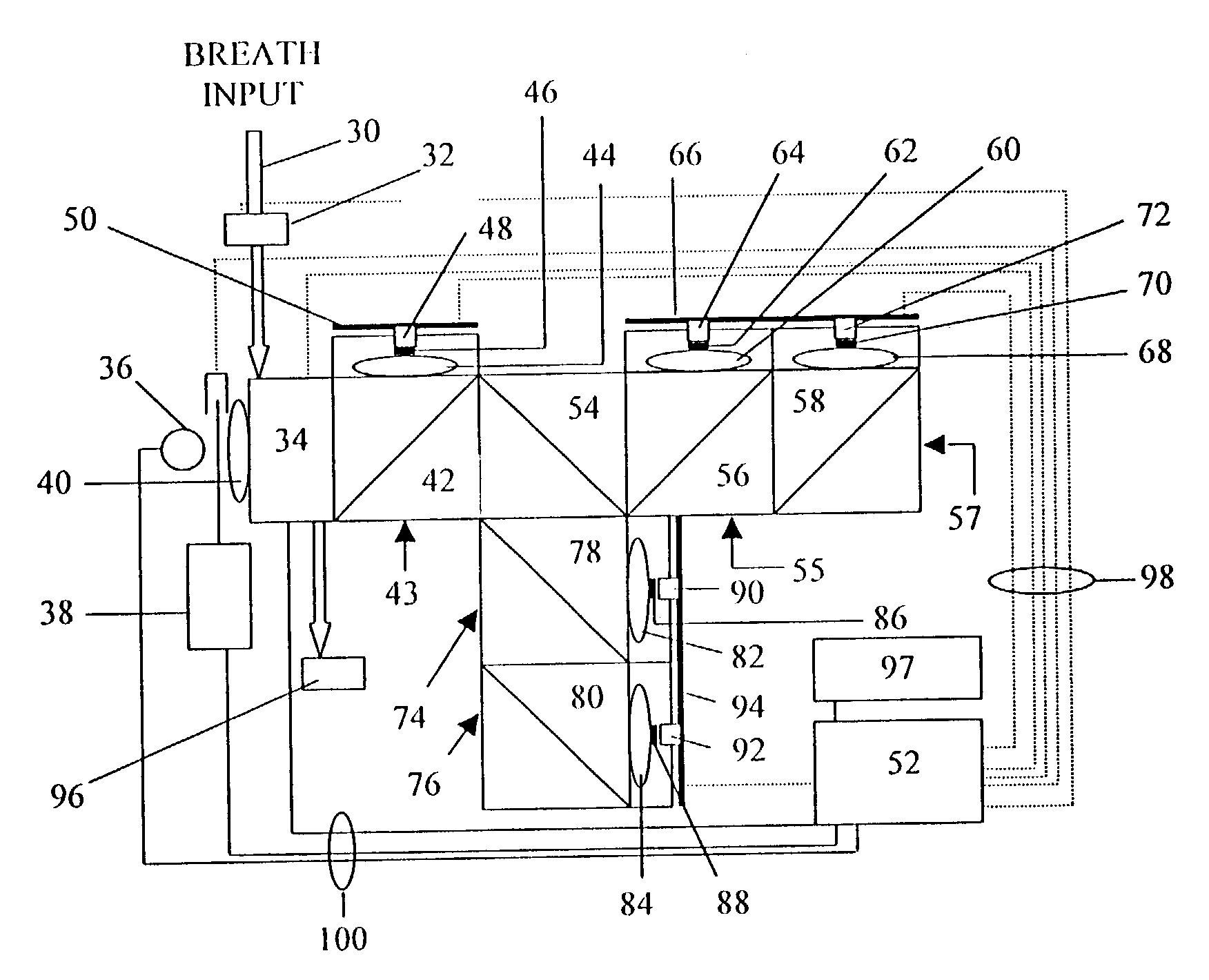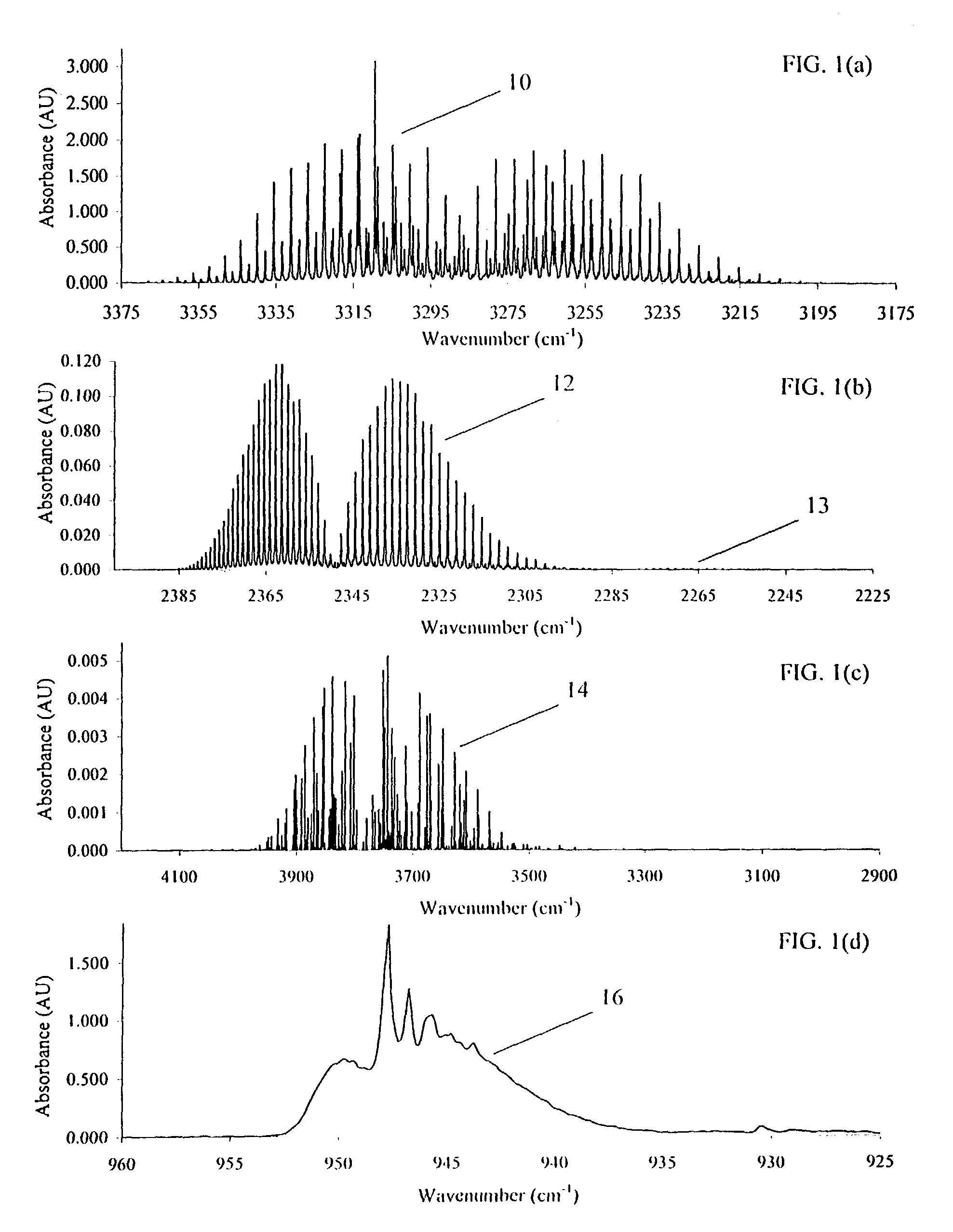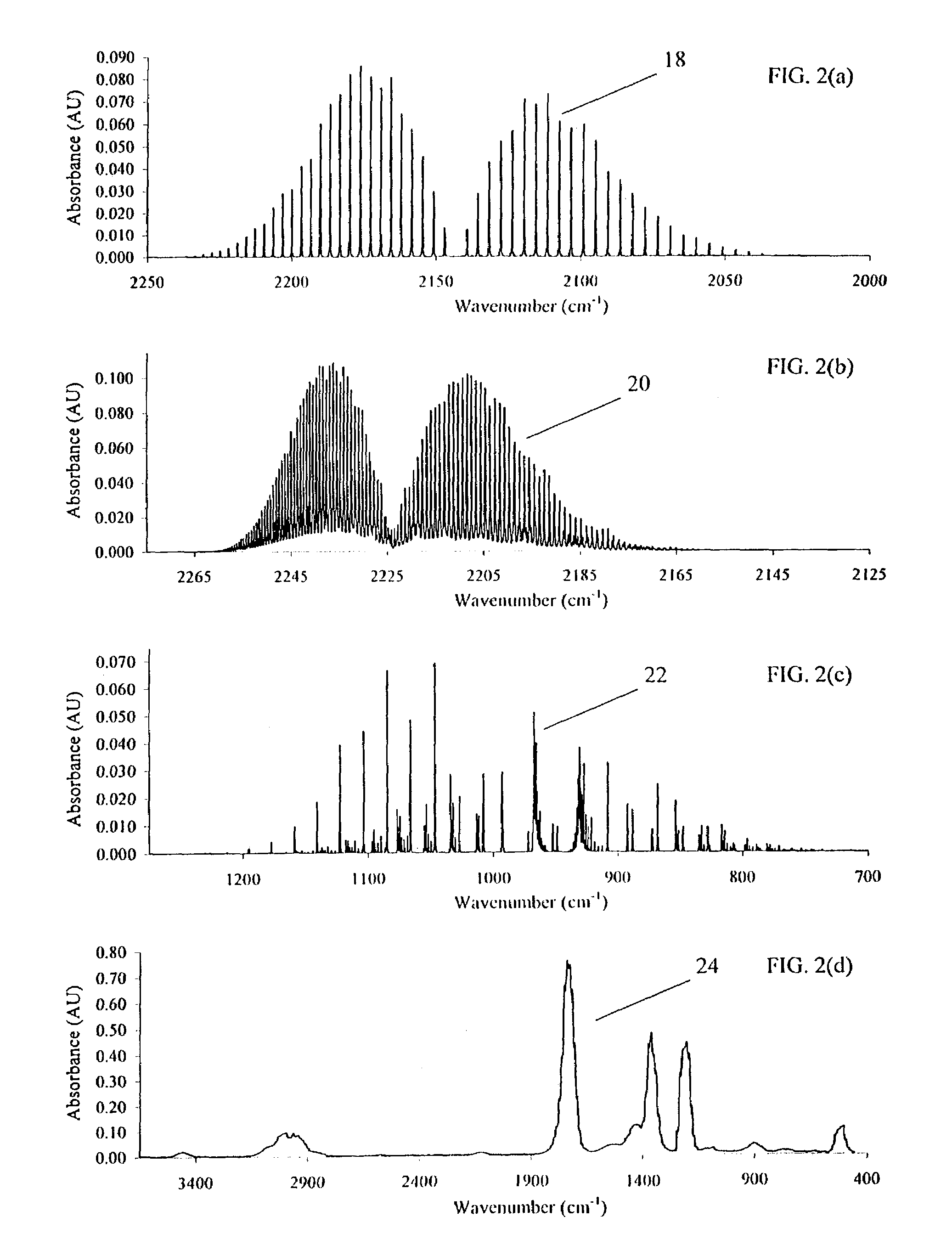Non-invasive, miniature, breath monitoring apparatus
a breath monitoring and miniature technology, applied in the field of breath monitoring apparatus, can solve the problems of slow instrument development and achieve the effects of low maintenance requirements, low sample volume and low cos
- Summary
- Abstract
- Description
- Claims
- Application Information
AI Technical Summary
Benefits of technology
Problems solved by technology
Method used
Image
Examples
Embodiment Construction
[0089]The stacked IR Spectra of analytes commonly measured by the invention disclosed herein are illustrated in the graphs of FIGS. 1(a) through 1(d). FIG. 1(a) illustrates the spectra for acetylene (C2H2); FIG. 1(b) is the spectra of carbon dioxide (CO2) 12; FIG. 1(c) is the spectra of an analyte of water 14 (H2O); and FIG. 1(d) is a spectra of sulfur hexafluoride (SF6) 16.
[0090]FIGS. 2(a) through 2(d) are graphs of stacked IR spectra of additional analytes of interest to breath analysis that can be measured by the invention disclosed herein. FIG. 2(a) is the spectra of carbon monoxide (CO) 18; FIG. 2(b) is the spectra of nitrous oxide (N2O) 20; FIG. 2(c) is the spectra of ammonia (NH3) 22; FIG. 2(d) is the spectra of acetone 24. Each of the analytes of these spectra can be measured by the analyzer of the present invention.
[0091]A preferred embodiment of the present invention is illustrated in the schematic block diagram of FIG. 3. The subject or patient breathes into an apparatus ...
PUM
| Property | Measurement | Unit |
|---|---|---|
| response time | aaaaa | aaaaa |
| response time | aaaaa | aaaaa |
| volume | aaaaa | aaaaa |
Abstract
Description
Claims
Application Information
 Login to View More
Login to View More - R&D
- Intellectual Property
- Life Sciences
- Materials
- Tech Scout
- Unparalleled Data Quality
- Higher Quality Content
- 60% Fewer Hallucinations
Browse by: Latest US Patents, China's latest patents, Technical Efficacy Thesaurus, Application Domain, Technology Topic, Popular Technical Reports.
© 2025 PatSnap. All rights reserved.Legal|Privacy policy|Modern Slavery Act Transparency Statement|Sitemap|About US| Contact US: help@patsnap.com



